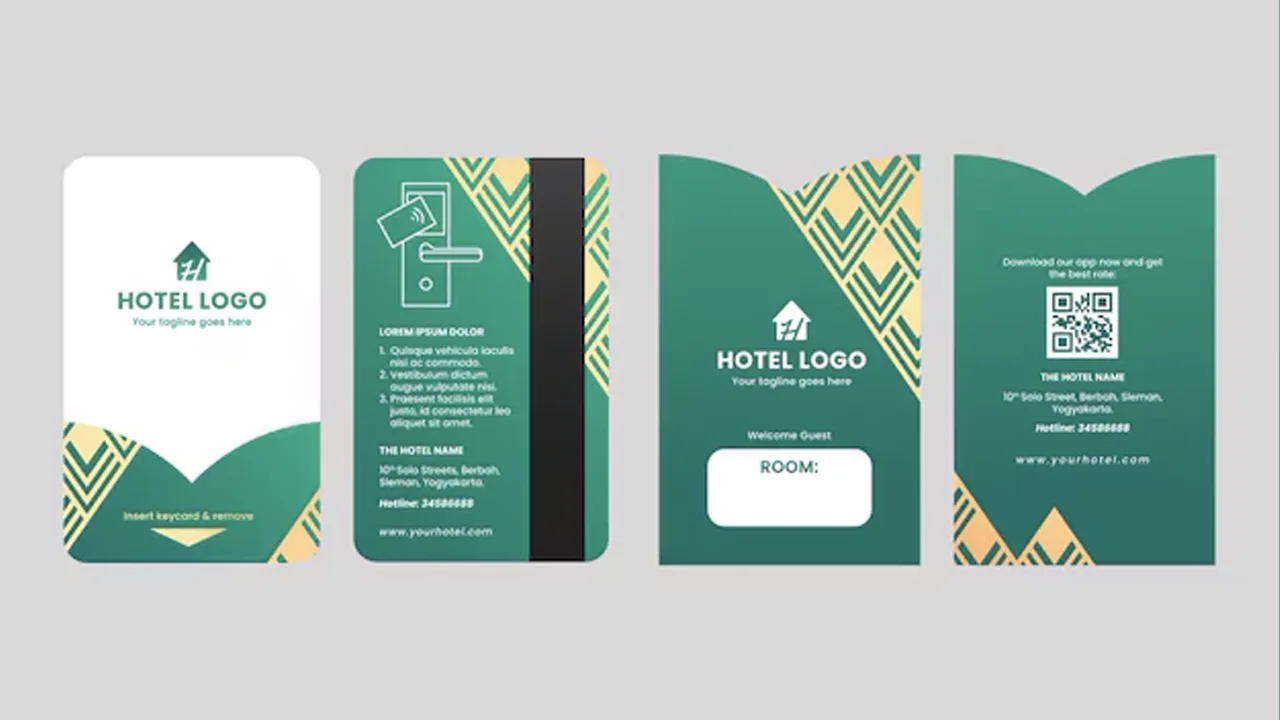
Hotel Key Card Printing – Common Questions Answered
Back To Blog Facebook X LinkedIn Introduction When running a hotel, every detail matters — and that includes your key
Printed Plastic Cards
Printed Key Tags
Printed Gift Cards
Printed Loyalty Cards
Custom Printed
Personalised Lanyards
Custom designed lanyards with choice of colour, attachment, and materials. All our lanyards come with a price match guarantee and free artwork design.
Entrust Instant ID Software is a complete solution for designing, printing, and managing ID credentials with speed and security.
Learn More
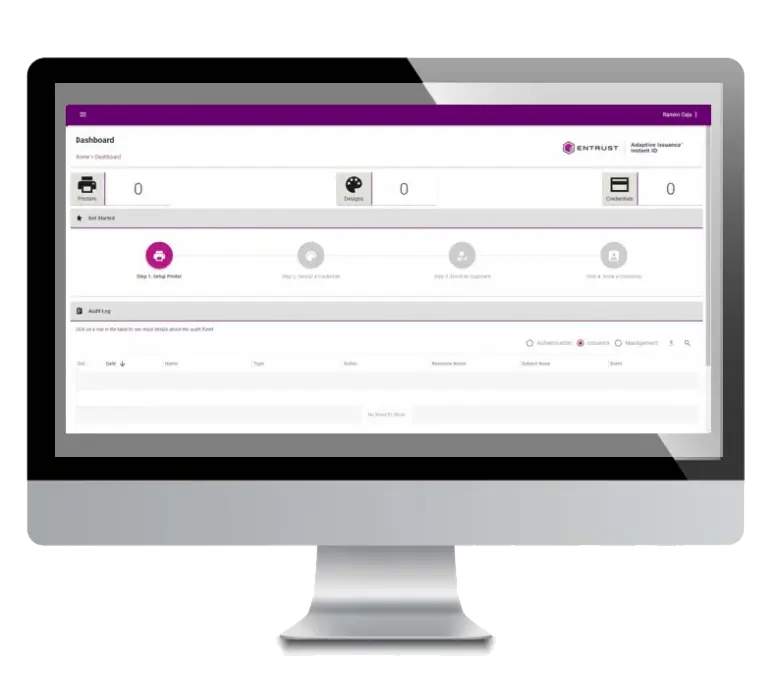

Easy-to-use ID card software for small businesses and schools. CardPresso offers templates, barcodes, and magnetic stripe support. Compatible with most card printers..
Learn More
Hotel key cards are more than just room access tools. They’re one of the first things your guests interact with — and a direct reflection of your brand. From classic plastic to eco-friendly wood and bamboo, the material you choose says a lot about your hotel’s values.
In this guide, we’ll explore the different materials modern hotel key cards are printed on. We’ll break down the pros and cons of each, and cover what customisation options are available for every type.
What is it? PVC (polyvinyl chloride) is the most common material used in hotel key cards. It’s durable, cheap to produce, and works well with all major lock systems.
Benefits:
Long-lasting and durable
Compatible with all standard card printers
Easy to customise with full-colour printing, foil, or lamination
Works with magstripe and RFID technologies
Drawbacks:
Not biodegradable
Made from fossil fuels
Not suitable for hotels looking to boost sustainability credentials
Personalisation Options:
Full CMYK colour printing
Gloss or matte finish
Spot UV and foil stamping
Works with magnetic stripes, RFID chips, barcodes, and QR codes
Best For: Hotels needing reliable, budget-friendly cards with high print quality.
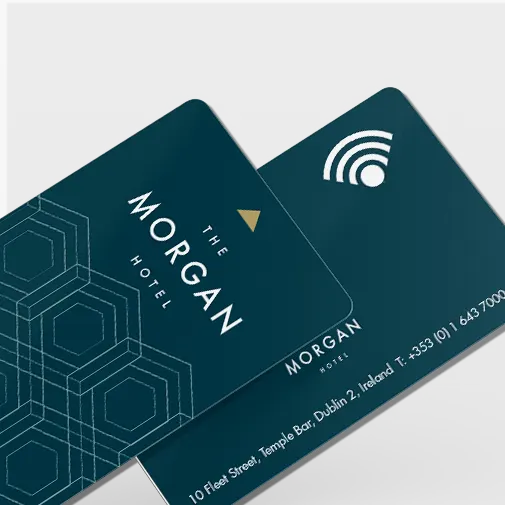
What is it? Recycled PVC cards are made from post-industrial or post-consumer waste plastic. They look and feel like standard PVC but with a reduced environmental impact.
Benefits:
Reduces plastic waste
Performs like regular PVC
Compatible with existing printers and encoders
Often cheaper than biodegradable alternatives
Drawbacks:
Still not biodegradable
Not as visually distinctive as wood or bamboo
May have slight visual imperfections depending on the source material
Personalisation Options:
Same options as regular PVC: full-colour print, foil, matte/gloss
Accepts RFID chips and magstripe encoding
Best For: Hotels that want to reduce waste without sacrificing performance or compatibility.
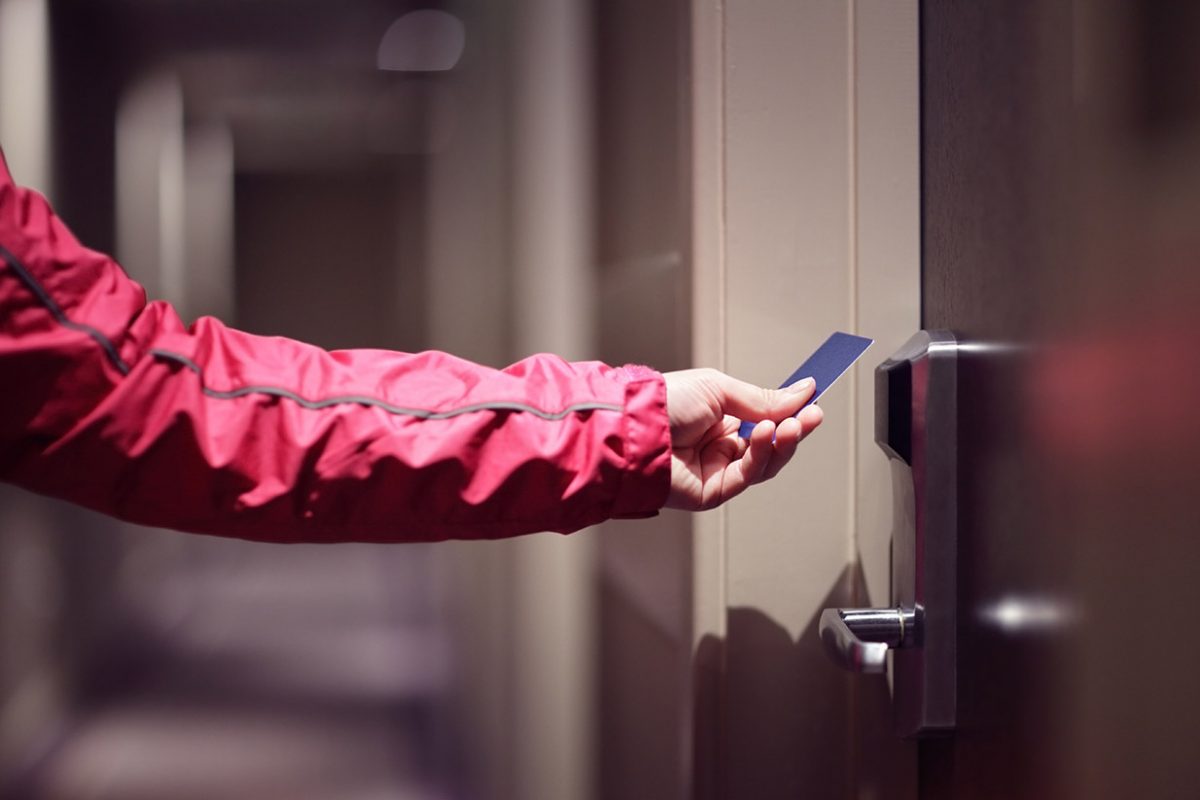
What is it? PET (Polyethylene Terephthalate) and PET-G (a glycol-modified version) are recyclable plastics known for strength and clarity. They offer a more environmentally friendly alternative to PVC.
Benefits:
Fully recyclable in standard plastic streams
More eco-friendly than PVC
Strong and impact-resistant
Good temperature stability
Drawbacks:
Slightly more expensive than PVC
Limited availability depending on region
Not biodegradable
Personalisation Options:
Full-colour digital or offset printing
Compatible with RFID chips and magnetic stripes
Gloss or matte finish available
Best For: Hotels that want a durable card with a smaller environmental footprint, especially in regions where PET recycling is widely supported.
What is it? BIO PVC is a modified version of traditional PVC that includes organic additives to make it biodegradable in landfill conditions. It breaks down faster than standard PVC but maintains the same physical properties.
Benefits:
More expensive than standard PVC
Biodegradation requires specific conditions (moisture, microbes, heat)
Not suitable for industrial composting
Personalisation Options:
Key cards aren’t just about function — they’re part of your brand. A well-designed card can make a big first impression. Here’s how it works:
Card Material
PVC: Standard plastic card. Durable and cost-effective.
PET/PET-G: More eco-friendly than PVC.
Wood or Paperboard: Sustainable options with a premium feel.
Printing Method
Offset Printing: Best for large quantities and high-quality full-color prints.
Digital Printing: Great for small runs or quick turnaround.
Screen Printing: Ideal for spot colors or specific design elements.
Finishing Options
Glossy or Matte Laminate: Affects the feel and durability.
Spot UV: Adds a shiny layer to parts of the design.
Foil Stamping: Metallic effects for luxury appeal.
Personalisation Features
Card Encoding: Writing access permissions to the card’s chip.
Variable Data: Print individual room numbers, barcodes, or QR codes.
Photo or Branding: Include staff portraits or promotional designs.
What is it? Bamboo is one of the fastest-growing renewable resources on the planet. It’s strong, naturally antimicrobial, and looks high-end. Bamboo key cards are a stylish and sustainable choice for hotels.
Benefits:
100% biodegradable and renewable
Unique natural texture and grain
Strong and lightweight
Great for eco-conscious branding
Drawbacks:
More expensive than plastic cards
Limited colour printing (usually laser engraving or single-colour print)
May not be compatible with all hotel lock systems (especially magstripe)
Personalisation Options:
Laser engraving (most common)
UV or screen printing (simple logos only)
Embossing possible on some types
RFID chip embedding (some limitations)
Best For: Boutique or eco-friendly hotels looking to stand out and reduce their carbon footprint.
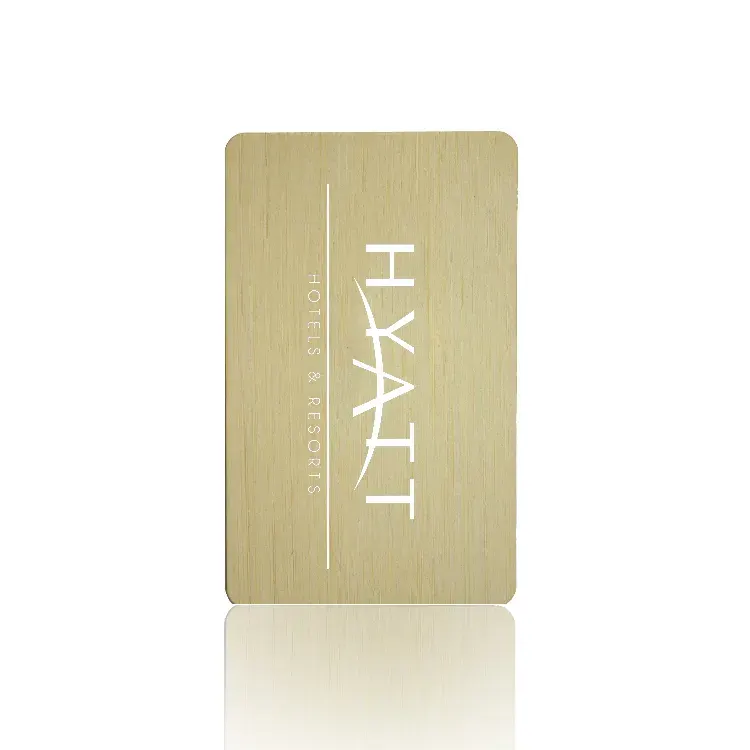
What is it? Wooden hotel key cards are made from sustainably sourced wood (like birch, beech, or maple). They’re a premium and eco-conscious alternative to plastic.
Benefits:
Biodegradable and compostable
Naturally stylish with a tactile feel
Strong brand differentiation
Supports sustainable forestry
Drawbacks:
Less durable than plastic in wet environments
Higher cost per unit
Print options are more limited
RFID compatibility varies
Personalisation Options:
Laser engraving (detailed and precise)
Pad printing for small logos or text
Screen printing (usually one or two colours max)
Compatible with some RFID/NFC chips depending on thickness
Best For: Luxury resorts, eco-hotels, and venues that want a memorable, sustainable touchpoint.
Related Posts

Hotel Key Card Printing – Common Questions Answered
Back To Blog Facebook X LinkedIn Introduction When running a hotel, every detail matters — and that includes your key
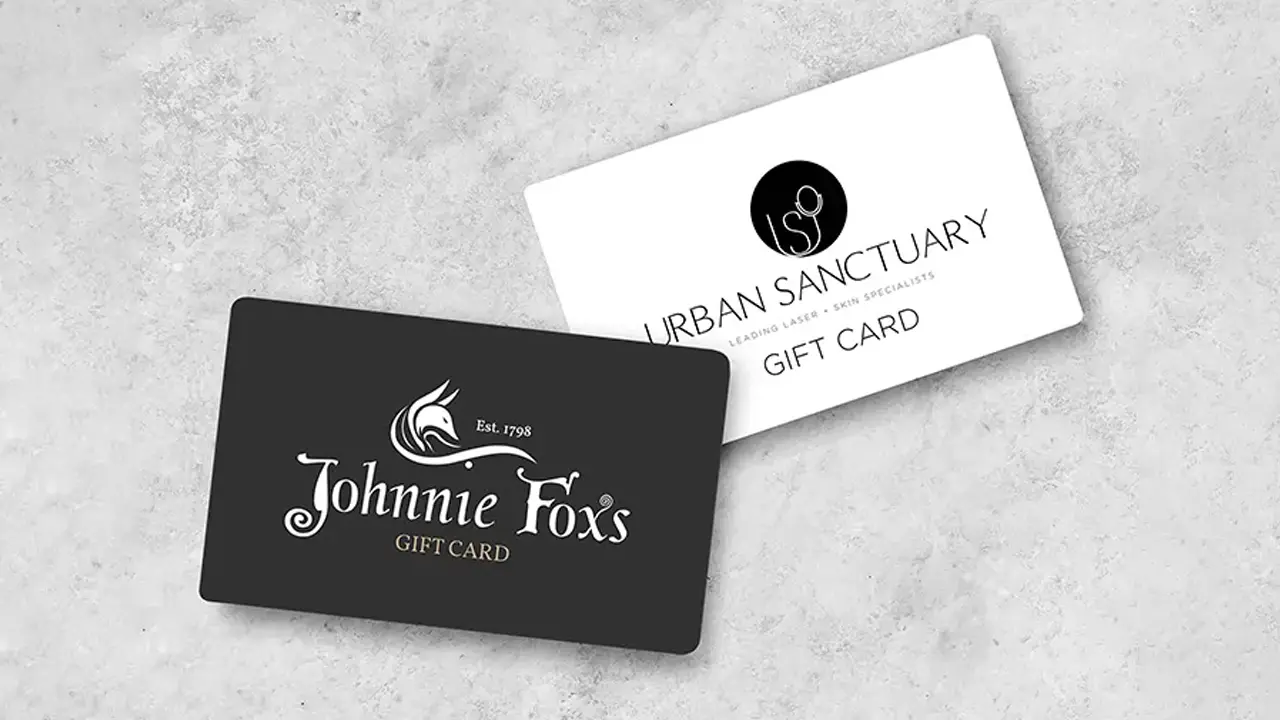
The Ultimate Guide to Custom Gift Card Printing for Businesses
Back To Blog Facebook X LinkedIn Introduction In today’s competitive market, custom printed gift cards are more than just a
Smart 31s Card Printer
Smart 51S Printer
Smart 5D Printer
Zebra ZC100 Card Printer
Zebra ZXP7 Printer
Evolis Primacy Printer
Evolis Zenius Card Printer
Evolis Pebble Card Printer
Zebra Printers
Magicard Printers
Fargo Printers
Entrust Printers
Pointman Ribbons
Pointman Printers
Zebra ZC100 Ribbons
Zebra ZXP1 Ribbons
Zebra ZXP3 Ribbons
Zebra ZXP7 Ribbons
Zebra ZXP9 Ribbons
Entrust Sigma DS1 Ribbons
Entrust Sigma DS2 Ribbons
Entrust Sigma DS3 Ribbons
Card Holders
Paxton Cards
Mifare Cards
Pointman Ribbons
Magicard 300 Pro Bundle
Zebra ZC350 Ribbons
Lanyard
Lanyard Dublin
Lanyards & Card Holders
Magicard Pronto 100 Ribbons
Magicard 300 Ribbons
Magicard 600 Ribbons
Magicard Rio Pro 360 Ribbons
Magicard Ultima Ribbons
Evolis Badgy Ribbons
Evolis Primacy Ribbons
Datacard SD260 Ribbons
Evolis Zenius Ribbons
Datacard SD360 Ribbons
Datacard SD460 Ribbons
Smart 21 Ribbons
Smart 30 Ribbons
Smart 31 Ribbons
Smart 50 Ribbons
Smart 70 Ribbons
Smart 51 Ribbons
Datacard SP25 Ribbons
Fargo DTC4250 Ribbons
Card Printing Software
Easybadge Card Design Software
Custom RFID Cards
Printed Eco Cards
Asset Tags
Best ID Card Printers 2023
Printed Plastic ID Cards
PVC Card Printers
Printed Membership Cards
Gift Card Printing
Plastic Gift Cards
Gift Card Printers
Gift Card Technology
Gift Cards For Business
Gift Card Manufacturers
Print Plastic Gift Cards
Mifare Classic Cards
Mifare Desfire Cards
Paxton Access Readers
Paxton Net2 Cards
Paxton Net2 Proximity Cards
Paxton Net2 Fobs
Paxton Net2 Key Fobs
Paxton Fobs
Custom Plastic Gift Cards
Gift Card Printing
Gift Cards For Business
Loyalty Card Printing
Hotel Key Card Wallets
Gift Card Wallets
Plastic Card Wallets
Sustainable Hotel Keycards
Hotel Keycards
ID Card Printer
Plastic Card Printers
Card Printers
Library Membership Cards
Bone Tag Labels
You can see how this popup was set up in our step-by-step guide: https://wppopupmaker.com/guides/auto-opening-announcement-popups/